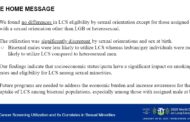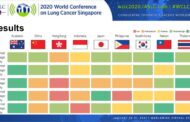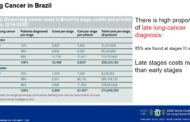Cancer survivors who are lesbian, gay, bisexual, or transgender (LGBT) face potentially survival-limiting health disparities, and this should be addressed by the healthcare system.
Those were the findings of a cross-sectional study comparing the health challenges of LGBT cancer survivors with those of survivors in the general population.
Researchers hope the work will push providers to remove barriers to care and “explore approaches to improve quality of life,” they wrote in the abstract and a poster (P09.19). Their findings were presented by Yannan Li, PhD, of the Icahn School of Medicine at Mount Sinai.
The team determined that specific sexual orientation and gender identity (SOGI) groups face different obstacles, that transgender individuals are particularly affected, and that a higher proportion of LGBT survivors are of minority races or ethnicity groups than their counterparts in the general population, potentially multiplying their health barriers.
The researchers embarked on the study to illuminate previous findings indicating that LGBT individuals, who comprise 3.5% of the US population, are more likely to smoke than non-LGBT people, predisposing them to lung and other cancers and worse disease outcomes. Previous evidence also demonstrates that cancer survivorship is jeopardized in this population due to poorer mental health, a body mass index over 25, and disparities in accessing healthcare, Dr. Li and his colleagues pointed out.
Study Details
The researchers used telephone survey data from the 2018 Behavioral Risk Factor Surveillance System, employing a weighted estimation method to analyze the demographics, health risks, healthcare access, and cancer outcomes of survivors from 7 states. They stratified the data by SOGI variables, using chi-square tests and logistics regression, to explore possible associations suggesting the presence of health disparities.
The study included 44,348 people, 1,439 of whom had self-identified as LGBT.
The researchers found that transgender individuals were younger than cisgender heterosexual (CH) survivors, with 55.9% and 91.3%, respectively, being beyond 55 years (p ˂ 0.0001). Half the transgender participants were people of color, compared with 13.8% in the CH group.
Transgender people had a higher rate of binge drinking than CH individuals (20% vs 8.9%), and 31.6% reported more than 14 days of poor mental health, versus 12.1% in the CH group (p < 0.0001). Among participants assigned female at birth, after adjustments for demographic and healthcare access variables, transgender individuals were more likely to have poorer mental health than CH people (OR = 2.47, 95% CI: 2.41-2.53). Among those assigned male at birth, transgender people were less likely to receive management for pain arising from cancer or its treatments than CH survivors (OR = 7.89, 95% CI: 5.98-10.42).
Compared with gay and lesbian participants, transgender individuals were more likely to be without health insurance (33.5% vs 3.4%, p ˂ 0.0001) and bisexuals were more apt to have 2 or more cancer types (35% vs 4.3%, p ˂ 0.0001).
Bisexuals reported the highest smoking rate, 28.9%, double that of CH survivors (p ˂ 0.001).
“Future policymakers should focus on expanding healthcare insurance coverage, promoting physical and mental wellbeing regarding cancer status, re-evaluating cancer pain management approaches, and improving programs for tobacco and alcohol control, to adapt to the needs of the LGBT population,” the researchers concluded.





